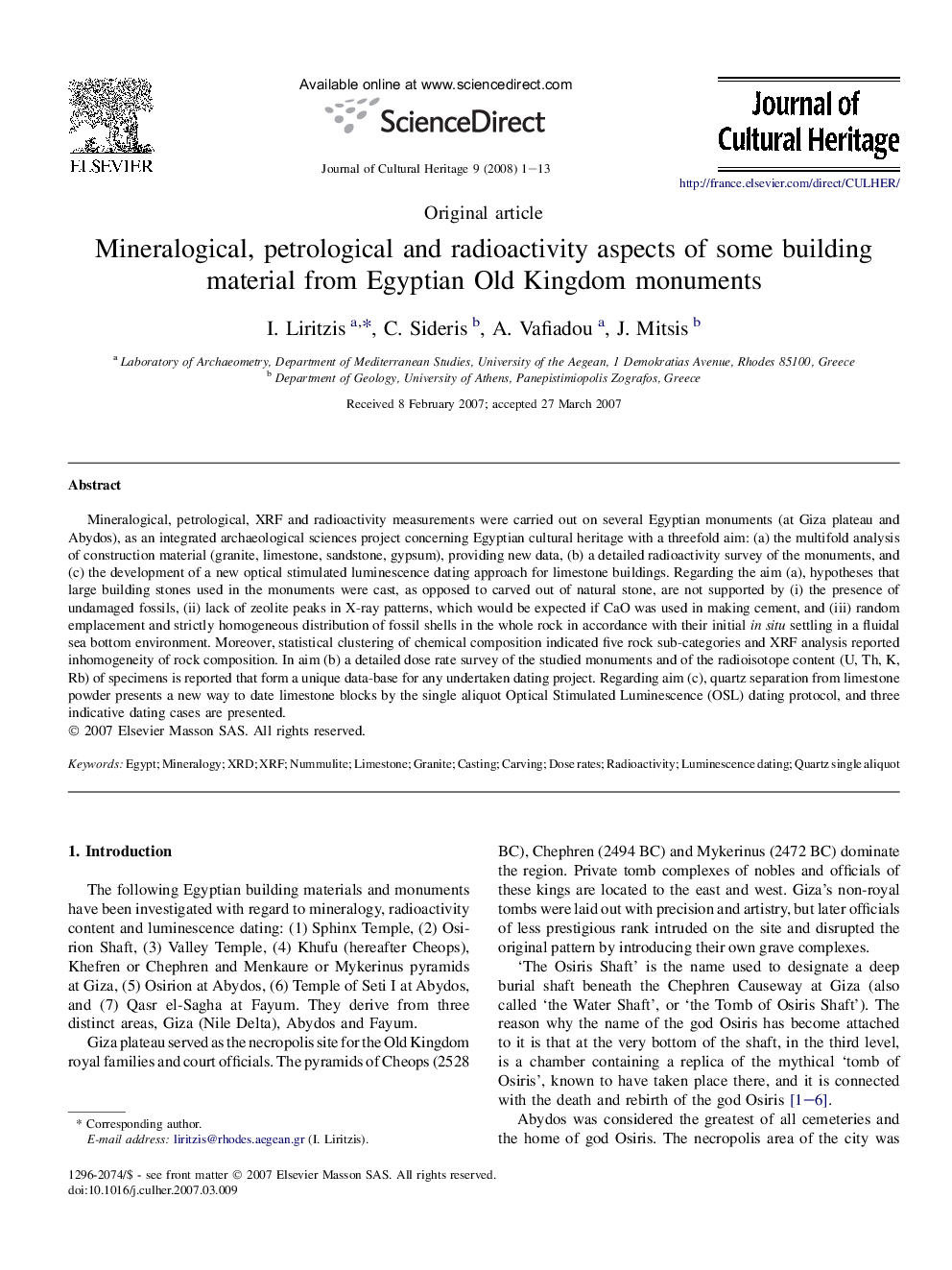| Article ID | Journal | Published Year | Pages | File Type |
|---|---|---|---|---|
| 1038651 | Journal of Cultural Heritage | 2008 | 13 Pages |
Mineralogical, petrological, XRF and radioactivity measurements were carried out on several Egyptian monuments (at Giza plateau and Abydos), as an integrated archaeological sciences project concerning Egyptian cultural heritage with a threefold aim: (a) the multifold analysis of construction material (granite, limestone, sandstone, gypsum), providing new data, (b) a detailed radioactivity survey of the monuments, and (c) the development of a new optical stimulated luminescence dating approach for limestone buildings. Regarding the aim (a), hypotheses that large building stones used in the monuments were cast, as opposed to carved out of natural stone, are not supported by (i) the presence of undamaged fossils, (ii) lack of zeolite peaks in X-ray patterns, which would be expected if CaO was used in making cement, and (iii) random emplacement and strictly homogeneous distribution of fossil shells in the whole rock in accordance with their initial in situ settling in a fluidal sea bottom environment. Moreover, statistical clustering of chemical composition indicated five rock sub-categories and XRF analysis reported inhomogeneity of rock composition. In aim (b) a detailed dose rate survey of the studied monuments and of the radioisotope content (U, Th, K, Rb) of specimens is reported that form a unique data-base for any undertaken dating project. Regarding aim (c), quartz separation from limestone powder presents a new way to date limestone blocks by the single aliquot Optical Stimulated Luminescence (OSL) dating protocol, and three indicative dating cases are presented.
